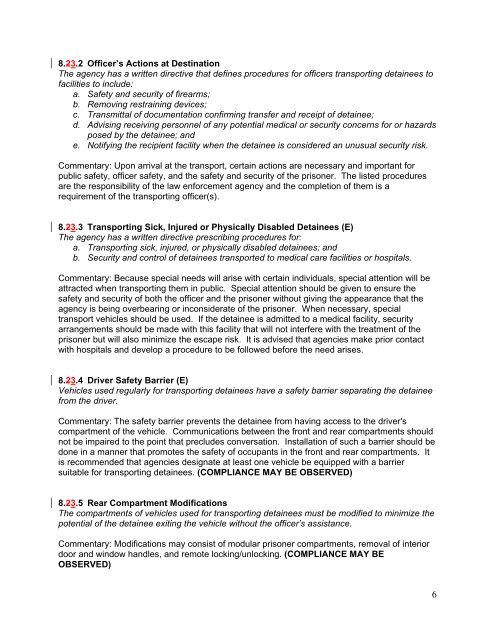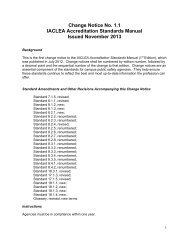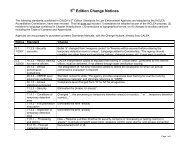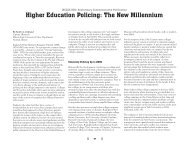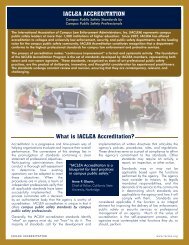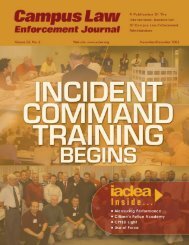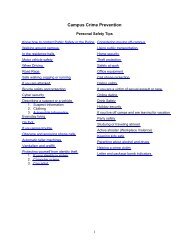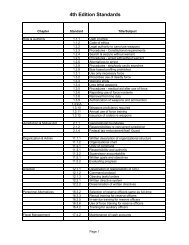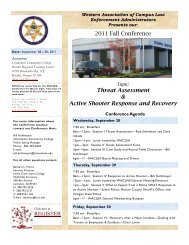Change Notice No. 1.1 IACLEA Accreditation Standards Manual ...
Change Notice No. 1.1 IACLEA Accreditation Standards Manual ...
Change Notice No. 1.1 IACLEA Accreditation Standards Manual ...
You also want an ePaper? Increase the reach of your titles
YUMPU automatically turns print PDFs into web optimized ePapers that Google loves.
8.23.2 Officer’s Actions at DestinationThe agency has a written directive that defines procedures for officers transporting detainees tofacilities to include:a. Safety and security of firearms;b. Removing restraining devices;c. Transmittal of documentation confirming transfer and receipt of detainee;d. Advising receiving personnel of any potential medical or security concerns for or hazardsposed by the detainee; ande. <strong>No</strong>tifying the recipient facility when the detainee is considered an unusual security risk.Commentary: Upon arrival at the transport, certain actions are necessary and important forpublic safety, officer safety, and the safety and security of the prisoner. The listed proceduresare the responsibility of the law enforcement agency and the completion of them is arequirement of the transporting officer(s).8.23.3 Transporting Sick, Injured or Physically Disabled Detainees (E)The agency has a written directive prescribing procedures for:a. Transporting sick, injured, or physically disabled detainees; andb. Security and control of detainees transported to medical care facilities or hospitals.Commentary: Because special needs will arise with certain individuals, special attention will beattracted when transporting them in public. Special attention should be given to ensure thesafety and security of both the officer and the prisoner without giving the appearance that theagency is being overbearing or inconsiderate of the prisoner. When necessary, specialtransport vehicles should be used. If the detainee is admitted to a medical facility, securityarrangements should be made with this facility that will not interfere with the treatment of theprisoner but will also minimize the escape risk. It is advised that agencies make prior contactwith hospitals and develop a procedure to be followed before the need arises.8.23.4 Driver Safety Barrier (E)Vehicles used regularly for transporting detainees have a safety barrier separating the detaineefrom the driver.Commentary: The safety barrier prevents the detainee from having access to the driver'scompartment of the vehicle. Communications between the front and rear compartments shouldnot be impaired to the point that precludes conversation. Installation of such a barrier should bedone in a manner that promotes the safety of occupants in the front and rear compartments. Itis recommended that agencies designate at least one vehicle be equipped with a barriersuitable for transporting detainees. (COMPLIANCE MAY BE OBSERVED)8.23.5 Rear Compartment ModificationsThe compartments of vehicles used for transporting detainees must be modified to minimize thepotential of the detainee exiting the vehicle without the officer’s assistance.Commentary: Modifications may consist of modular prisoner compartments, removal of interiordoor and window handles, and remote locking/unlocking. (COMPLIANCE MAY BEOBSERVED)6


